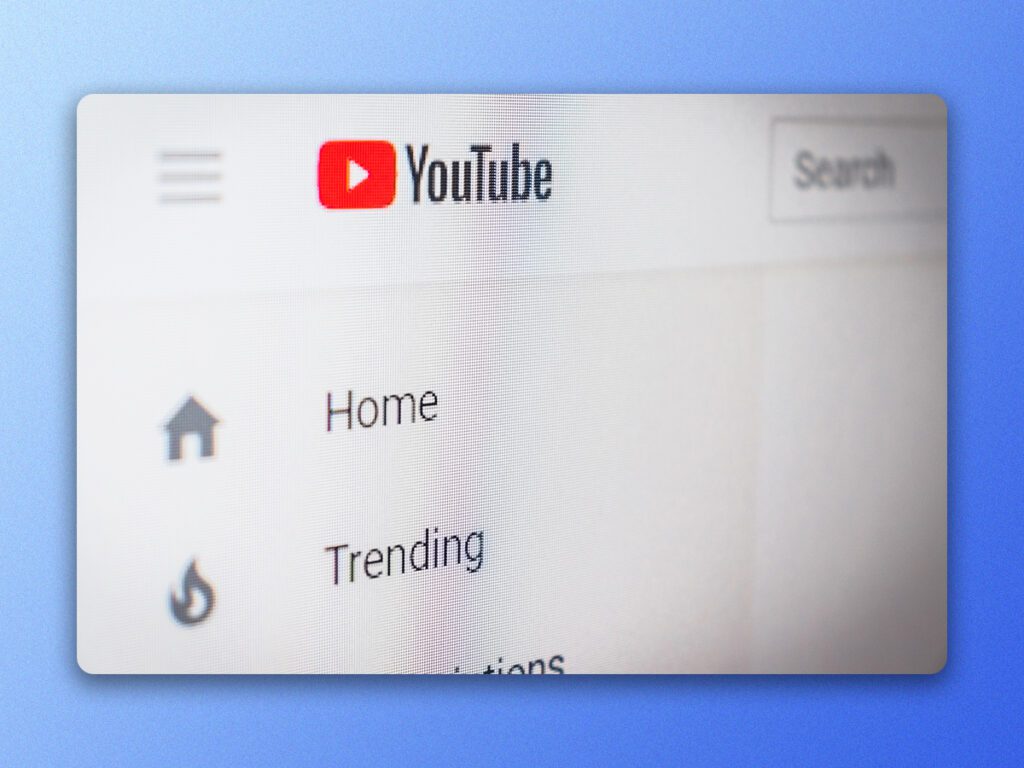By Mark Horiuchi
Key Points
- Video metadata, especially the descriptive kind which includes titles, descriptions, and tags, serves as a vital tool in enhancing YouTube SEO for your business.
- The YouTube algorithm influences viewer experiences by focusing on watch time, user satisfaction, and reducing harmful content, using video metadata as a key component to understand and assess a video’s relevance and appeal.
- Using proven strategies like audience research, optimal keyword selection, and crafting engaging titles, thumbnails, and descriptions can hugely improve a video’s visibility on YouTube.
Ever scratched your head, pondering the secret sauce behind videos that skyrocket to the top of YouTube searches? Unlock the door to understanding video metadata, the unsung hero of YouTube SEO. As you delve deeper, you’ll unravel how this behind-the-scenes element can supercharge your videos’ visibility, ensuring they stand out in the vast digital ocean of content. Dive in and let’s demystify the magic of metadata for your business success.

What Is Video Metadata? Your Questions Answered
Before diving into the nitty-gritty of YouTube SEO, it’s important to understand the mystery of video metadata. This often overlooked but vital aspect plays a significant role in video optimization. Stick around as you’ll discover the different types of metadata and why focusing on the descriptive kind will give your YouTube SEO a significant boost.
Video metadata serves as a rich source of information about your video content. It consists of three primary types: descriptive, administrative, and structural.
- Descriptive metadata is a pivotal component in SEO as it offers a clear glimpse into the video’s content, including titles, descriptions, and tags that help search engines understand and index your video appropriately.
- Administrative metadata assists with the management of the video, containing details like creation date and file type.
- Structural metadata illustrates how different components of the video relate to each other.
However, to enhance your YouTube SEO, concentrating on crafting compelling and relevant descriptive metadata is the way to go.
Do Videos Have Metadata? Why Does This Matter?
Absolutely, videos contain metadata, and understanding its significance is crucial for SEO. Metadata acts as a silent promoter of your video content, allowing search engines to categorize and rank your videos better.
By optimizing video metadata, you can increase your content’s visibility, thereby attracting a larger audience and improving your channel’s success rate. So, embrace proper metadata practices to give your YouTube videos the recognition they deserve.
How To Check Video Metadata
Checking video metadata is a straightforward process. Many tools exist that allow you to view the metadata of your videos. It’s not difficult to find the necessary information, including titles, descriptions, and tags.
Additionally, YouTube has built-in features where you can view and edit metadata directly. Make sure to use these tools to ensure your videos are well-optimized and ready to capture the audience’s attention.
How To Add Metadata to Your Video on YouTube
Adding metadata to your video on YouTube is a seamless process. Start by uploading your video to the platform. Once the upload completes, you’ll find options to add or edit metadata like titles, descriptions, and tags in the video details section. Carefully craft this information to be both engaging and SEO-friendly, using relevant keywords without overstuffing.

Remember, a well-balanced use of keywords in your metadata can significantly enhance your video’s visibility, helping you reach a broader audience and achieve your YouTube channel goals. Make metadata your ally in creating YouTube SEO optimized videos.
The YouTube Algorithm, Explained
Dive into the heart of YouTube: its algorithm. Ever wonder what determines the videos popping up on your screen? Let’s break it down.
YouTube’s algorithm plays a significant role in shaping viewer experiences, influencing a whopping 70% of video recommendations. Rather than focusing on the actual content of videos, this system zeroes in on watch time, user satisfaction, and minimizing harmful content. It’s like a matchmaker, setting viewers up with content they’re likely to enjoy.
How Does the YouTube Algorithm Work?
Peek under the hood and you’ll find that the YouTube algorithm tailors its suggestions based on user behavior. It takes into account their watch history, preferred topics, videos frequently watched in tandem, and even regional preferences.
Recommendations surface in three main spots: Home, Suggested Videos, and Search, each with its unique emphasis. And for those short, snappy YouTube Shorts? Engagement and watch time aren’t as pivotal as they are for classic videos.
Does Video Metadata Matter to the Algorithm?
Absolutely! Think of video metadata – titles, descriptions, tags, and captions – as the DNA of your video. This information helps the algorithm grasp a video’s essence and relevance. But there’s more. Metrics like likes, shares, and comments play their part in determining a video’s prominence and appeal.
How To Improve Organic Reach
Want to boost your video’s visibility without breaking the bank? Start with keyword research to understand what viewers search for. Craft captivating titles and thumbnails that demand attention. Prioritize quality over length – engaging, meaningful video content holds viewers longer than sheer duration. Drive traffic from external sources, employ cards and playlists, and join the conversation by commenting. Embrace current trends, but never shy away from experimentation. Know your audience inside and out, release content at peak times, and always, always prioritize content that speaks to your audience.
Best Practices To Optimize Your Videos for YouTube
Embark on the journey to mastering YouTube SEO with a few time-tested strategies. Get ready to dive deep into understanding your audience, pinpointing the perfect keywords, and crafting irresistible titles, thumbnails, and descriptions.

Audience
Audience research is not just beneficial, it’s essential. Delve into viewers’ preferences, watching habits, and the topics that resonate with them. Utilize YouTube Analytics to gather data on viewer demographics and preferences. Align this knowledge with your content strategy to create videos that not only attract but also retain your target audience.
Target Keyword
Stepping up your SEO game starts with nailing the right target keyword. Start by brainstorming potential phrases and using tools like Google Keyword Planner or YouTube’s search suggest feature. Analyze competitors and similar channels to spot popular and relevant keywords. Remember, the goal is to find a golden keyword: high search volume, but low competition.
Title, Thumbnail, and Description
Think of your video’s title, thumbnail, and description as the golden trio that works in harmony to draw viewers in.
- Title: A well-crafted title should be captivating yet straightforward, encapsulating the essence of your video while incorporating the target keyword.
- Thumbnail: Your thumbnail should offer a vibrant and clear snapshot of what to expect, teasing the content in an engaging way.
- Description: A good description not only outlines the content but also boosts SEO. Put the keyword close to the beginning and keep it succinct, under 1000 characters. This section serves as a roadmap, guiding viewers on what to anticipate, while assisting the YouTube algorithm in categorizing your content effectively.
By synergizing these elements, you set a strong foundation for a video that resonates and ranks well on YouTube.
Video Length and Time Stamps
Optimizing videos for YouTube isn’t just about the bells and whistles. The substance of your video, as well as its length and structure, matter immensely. While YouTube tends to favor longer videos, keeping viewers hooked throughout is vital.
A focus on maintaining strong engagement helps avoid early drop-offs. Additionally, including time stamps into your videos serves as an excellent tool for organization, allowing viewers to easily navigate to sections of interest, enhancing the user experience.
Accessibility
Making your videos accessible to a wider audience not only broadens your reach but also enhances the viewing experience. Include captions and transcripts to aid those with hearing impairments. A thoughtful approach to accessibility can elevate your channel, fostering a diverse and inclusive community of engaged viewers.
Other Important Factors
To further amplify your YouTube presence, consider these tips as well. Even though tags have lost some of their steam in ranking influence, they still offer an avenue for keyword inclusion. Selecting an appropriate category helps in aligning your video with the right audience.
Don’t overlook the potential of cards and end screens to guide viewers to more of your content. Incorporating playlists can group relevant videos together, creating a seamless viewing experience. Finally, engaging with your audience through your own comments can foster a vibrant community.
Don’t Overdo It
In the pursuit of optimization, remember the mantra: moderation is key. Avoid the temptation to stuff your content with keywords recklessly. This approach could not only dampen your SEO efforts but also irritate your viewers. Maintain a balance, keeping your content genuine and viewer-friendly, as authenticity and viewer satisfaction hold the ace in the YouTube SEO game.
Why You Should Care About Video Marketing
YouTube is a perfect platform for video marketing, a powerful way for you to get your business out there and in people’s minds. The following insights unravel the compelling reasons behind its rising dominance in the digital space.

Video Consumption
The numbers are telling: video isn’t just a trend; it’s the way of the digital age. On a global scale, the average person consumes 100 minutes of video daily. Now, let’s zero in on millennials. 14.9% of them are clocking up to 20 hours of online video every week. With stats like these, it’s evident that video content plays a pivotal role in daily consumption habits.
Reach
Expand the horizon and the numbers continue to astonish. In 2022, a staggering 3 billion internet users tapped into online video. These videos have a far-reaching impact, viewed by an impressive 91.8% of global internet users. But there’s more: 90% of consumers consume videos via their mobile devices. And speaking of YouTube? A whopping 63% of its views originate from mobile platforms. Video, especially on mobile, clearly resonates across the board.
Proven Results
Beyond the screen, the impact of video marketing resonates in the tangible world of business outcomes. A whopping 87% of business owners give a nod of approval to their ROI from video campaigns. And when it comes to sales, 78% of video marketers vouch that video gave them a noticeable boost.
Consumers lean into video too, with 96% leveraging it to familiarize themselves with products and services. As for the world of B2B and B2C marketing? Video makes its mark here as well, embraced by 71% and 66% of marketers respectively.
Final Thoughts
Understanding and leveraging video metadata is essential for amplifying your business’s YouTube SEO strategy. At the heart of video optimization, you’ll find video metadata, a tool that serves to enhance the visibility and accessibility of your content, acting as a silent promoter in the vast YouTube landscape. Concentrate on crafting captivating and SEO-friendly descriptive metadata, which offers important insights into your video’s content. This assists search engines in categorizing and ranking your videos proficiently.
In addition, keyword research, engaging titles and thumbnails, audience research, and thoughtful accessibility measures can set a firm foundation for your YouTube SEO success. Make video metadata your reliable ally in navigating the bustling realm of YouTube, fostering a broader and more engaged viewership while bolstering your business growth through effective video marketing.

Mark Horiuchi
Mark is a Content Writing Specialist for Visla. In a past life, they’ve worked as a content analyst and product expert for an in-house video content marketing team and a freelance blog writer for a wide range of clients.
